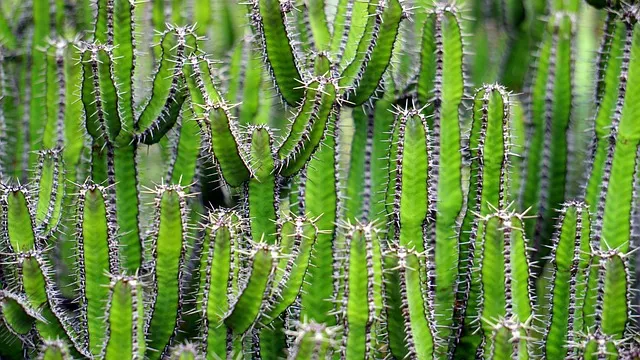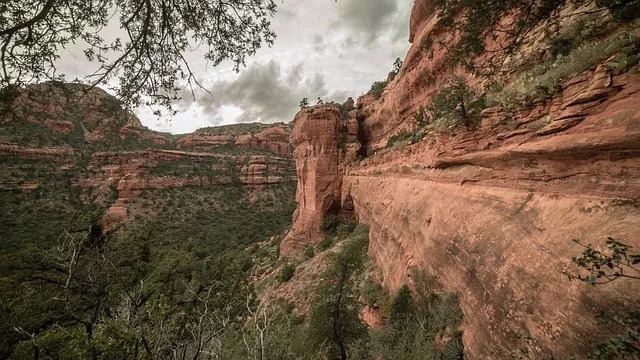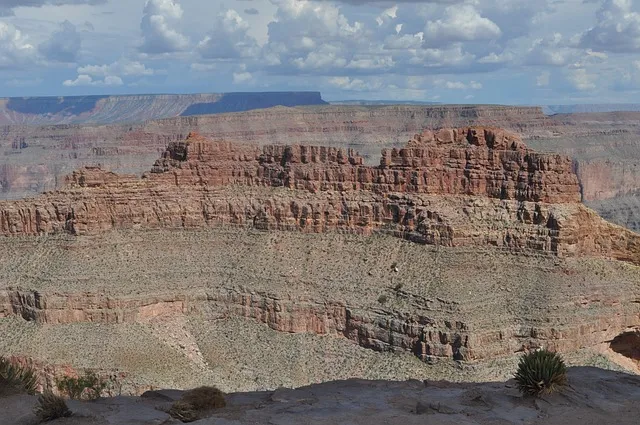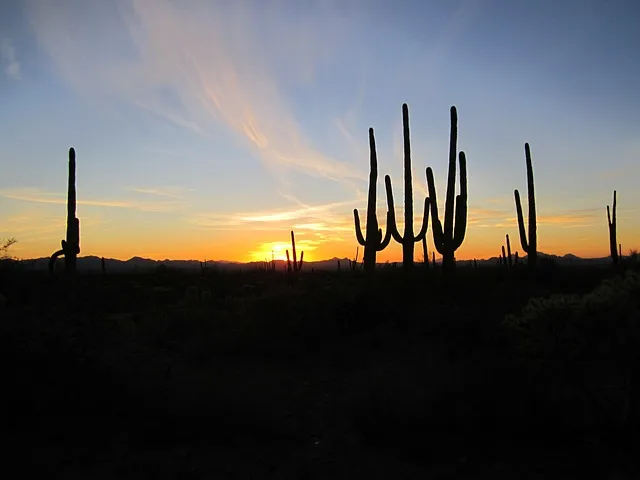Arizona's deserts, including the Sonoran and Mojave, are incredibly diverse ecosystems with unique plant species like saguaro cacti and Joshua trees, adapting to the harsh arid conditions. These regions exhibit high biodiversity, especially in transition zones where both desert types coexist. The state's deserts are not just home to a variety of life forms but also serve as vital natural heritage sites, showcasing resilience and adaptability. Arizona's landscapes range from the iconic arid environments to unexpected oases, each with its own microclimate. These ecosystems support a wide range of wildlife and demonstrate complex interdependencies within the natural settings.
The cities in Arizona, like Phoenix and Tucson, reflect a blend of Southwestern heritage and modern urban life, with cultural festivals, art scenes, and culinary experiences influenced by both historical roots and contemporary trends. Phoenix has evolved from adobe structures to modern skyscrapers, preserving its history while embracing innovation in architecture and urban design. The integration of old and new architectural styles contributes to a rich urban tapestry that resonates with the city's diverse population. Arizona's cities are vibrant cultural hubs that celebrate both traditional and contemporary art forms, offering a testament to the state's cultural richness and diversity.
Arizona’s landscapes span a remarkable spectrum from the arid expanses of its desert biomes to the vibrant pulse of urban life, offering visitors and residents alike a rich tapestry of experiences. This article delves into the multifaceted nature of Arizona, exploring the ecological diversity within its deserts, the seamless transition between barren terrains and verdant oases, and the iconic flora such as the Sonoran Desert’s unique cacti. Concurrently, it turns its lens to the urban sprawl, particularly Phoenix’s architectural transformation, and the cultural richness that defines Arizona’s cities as a melting pot of life and innovation. Through these lenses, readers will gain insight into the dynamic interplay between nature and civilization in this Southwestern state.
- Exploring the Diversity of Arizona's Desert Biomes
- The Transition from Desert to Oasis: Arizona's Natural Wonders
- Iconic Cacti and Native Flora of the Sonoran Desert
- Urban Landscapes: Phoenix's Architectural Evolution
- Cultural Melting Pot: Vibrant Life in Arizona's Cities
Exploring the Diversity of Arizona's Desert Biomes

Arizona’s desert biomes are a mosaic of ecosystems, each offering unique insights into the resilience and adaptability of plant and animal life. The Sonoran Desert, the most diverse of Arizona’s deserts, stretches across the southern part of the state, encompassing regions like Saguaro National Park. Here, the iconic saguaro cactus stands as a sentinel, its long arms reaching towards the sky, and its deep roots anchoring it to the parched earth below. The desert is a tapestry of sands, rocks, and life forms that have evolved to thrive in arid conditions. The creosote bush, with its silver-blue leaves, and the prickly pear cactus, with its edible fruits, are among the many species that call this landscape home. Further north, the Mojave Desert presents a different face of desert beauty with Joshua trees casting long shadows across a rugged terrain. These distinct biomes, while sharing the characteristic of low rainfall, exhibit markedly different flora and fauna, reflecting the microclimates and geological histories that shape them. The transition zones between these deserts are particularly noteworthy for their biodiversity, showcasing a blend of species from both regions. Arizona’s deserts are not static; they are dynamic environments influenced by seasonal changes, human activities, and conservation efforts. Each desert biome in Arizona offers a window into the complexities and interconnectedness of life on Earth, inviting exploration and appreciation for their unique contributions to the state’s natural heritage.
The Transition from Desert to Oasis: Arizona's Natural Wonders

Arizona’s landscape is a stunning juxtaposition of stark deserts and unexpected oases, each offering a unique perspective on the state’s natural wonders. The desert, with its expansive cacti-dotted plains and vibrant sunsets, presents an image of rugged beauty and arid tranquility. Here, the Sonoran Desert stands as North America’s most lush and diverse desert, harboring a variety of life forms adapted to the harsh conditions. As one ventures beyond the rugged terrain, the transition to an oasis is marked by the sudden presence of water—a vital resource that supports diverse ecosystems. These natural havens are often nestled in secluded canyons or bordered by towering mountains, creating microclimates where a variety of plant and animal species flourish. The contrast between the desert’s aridity and the lushness of an oasis is a testament to Arizona’s rich biodiversity and the resilience of its native inhabitants. This transition from a landscape of little water to one teeming with life highlights the intricate interplay between environment, geology, and adaptation. It is within these ever-shifting landscapes that visitors can witness the true character of Arizona’s natural wonders.
Iconic Cacti and Native Flora of the Sonoran Desert

The Sonoran Desert, sprawling across parts of Arizona, is home to an array of iconic cacti and native flora that have adapted to the harsh conditions of this arid environment. Among these are the Saguaro cactus, which can grow up to 50 feet in height and is a symbol of the American Southwest. Its distinctive shape and ribbed structure are not only visually striking but also crucial for water retention and photosynthesis. The desert’s flora exhibits remarkable resilience and efficiency, with many species possessing spines or thick waxy skins to reduce water loss. These adaptations ensure that the plants can endure the intense sun, scarce rainfall, and temperature extremes characteristic of the Sonoran Desert.
In addition to the Saguaro, the desert’s ecosystem supports a diverse range of cacti, including the prickly pear cactus, cholla cactus, and the organ pipe cactus, which is a columnar cactus with pink or yellow flowers. The native flora extends beyond cacti to include a variety of shrubs, grasses, and wildflowers that bloom with vibrant colors after rains. These plants not only create a diverse tapestry of life but also support a complex web of wildlife, including species of birds, reptiles, insects, and mammals that have evolved to thrive in this unique environment. The Sonoran Desert’s flora is a testament to the ingenuity of nature, showcasing how life can not only survive but also flourish under seemingly unforgiving conditions.
Urban Landscapes: Phoenix's Architectural Evolution

Phoenix, the capital and most populous city in Arizona, is a testament to the state’s urban growth and architectural evolution. The city’s skyline is a dynamic tapestry of modern skyscrapers intermingling with structures that reflect its history and cultural heritage. Notably, the architectural landscape has transformed over the decades, evolving from a cluster of adobe buildings to a metropolis boasting contemporary designs and green-built certifications. This transformation reflects Phoenix’s commitment to progress while maintaining a respectful nod to its past.
The evolution of Phoenix’s architecture is a narrative of both functional necessity and aesthetic ambition. The city’s downtown area showcases a range of architectural styles, from the neoclassical Arizona State Capitol building to the sleek, modernist towers of the Camelback East complex. This blend of old and new creates a unique urban fabric that is as diverse as the people who inhabit it. The city’s planners and architects have skillfully integrated public spaces with residential and commercial developments, fostering a sense of community and enhancing the livability of the city. Through its ongoing architectural evolution, Phoenix continues to set a benchmark for urban design in the American Southwest.
Cultural Melting Pot: Vibrant Life in Arizona's Cities

Arizona’s cities are a testament to the state’s rich cultural tapestry, where diverse communities coalesce into a vibrant and dynamic melting pot. Phoenix, the capital, stands as the most populous city, offering a blend of Southwestern heritage, contemporary urban living, and a thriving arts scene. The city’s museums, galleries, and performance venues showcase everything from traditional Native American art to cutting-edge contemporary works, reflecting the multifaceted identities within its borders. Tucson, with its lush Sonoran Desert backdrop, is equally renowned for its cultural diversity, hosting a myriad of festivals and events that celebrate Mexican heritage, indigenous traditions, and modern artistic expressions. These urban centers are not just places of historical significance but also hubs of innovation and cultural exchange where residents and visitors alike can immerse themselves in the rich mosaic of Arizona’s cultural life. The culinary offerings alone, from Native American frybread to authentic Mexican cuisine, provide a taste of the myriad influences that have shaped the state’s unique culture.
Arizona’s landscapes offer a mesmerizing juxtaposition of arid deserts and urban oases, each with its unique charm. The state’s diverse desert biomes, marked by iconic cacti and resilient native flora, provide a vivid canvas that captures the essence of nature’s artistry. As one transitions from the rustic splendor of these natural wonders to the modern marvels of Arizona’s cities, the evolution of Phoenix’s architecture stands as a testament to human ingenuity and adaptability. This metropolitan transformation complements the state’s cultural melting pot, where vibrant life flourishes against the backdrop of both rugged wilderness and cosmopolitan splendor. The contrast between these environments within Arizona not only enriches its identity but also offers a compelling narrative on the coexistence of natural beauty and urban development.
